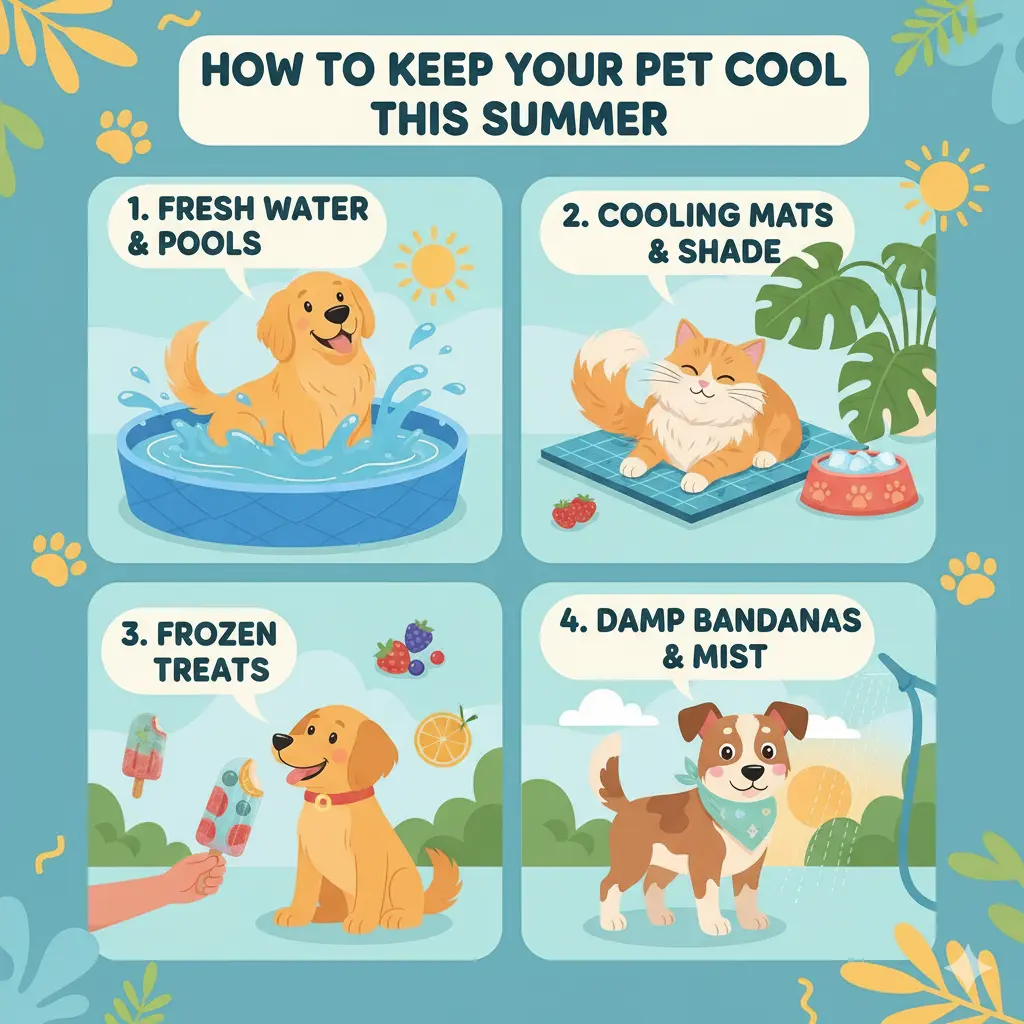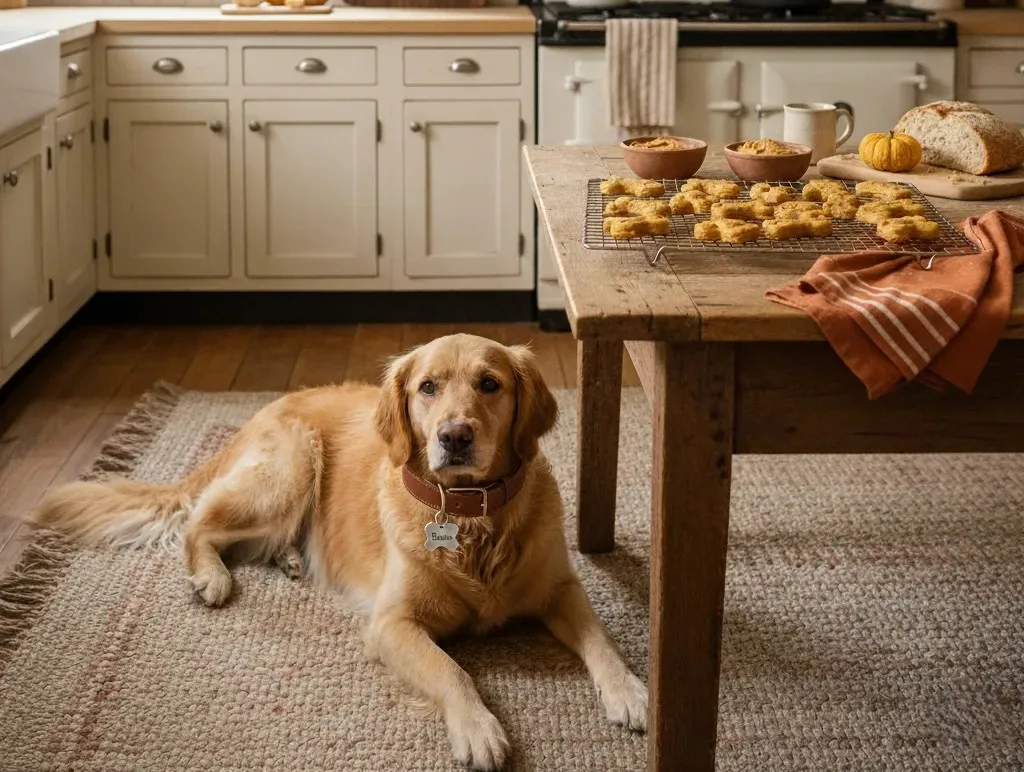When summer temperatures rise, our furry friends feel the heat just as much as we do—sometimes even more. Unlike humans, pets can’t sweat the way we do, which means they rely on us to keep them safe, comfortable, and hydrated. Whether you have a dog, cat, rabbit, or other companion, understanding how to keep your pet cool during summer is essential for their health and happiness.
Understand the Signs of Overheating
Before diving into cooling tips, it’s crucial to recognize the signs of heat stress or heatstroke in pets. Common symptoms include excessive panting, drooling, rapid heartbeat, lethargy, vomiting, and disorientation. If your pet’s gums turn dark red or purple, or if they collapse, it’s a medical emergency—seek a veterinarian immediately. Prevention is always better than treatment, so let’s explore how to keep your pet safe before it gets to that point.
Hydration Is Everything
Just like humans, hydration plays the biggest role in keeping pets cool. Make sure fresh, clean water is always available. Refill bowls several times a day, and if possible, use a pet water fountain to encourage drinking—it keeps the water moving and cool.
If you’re heading outdoors, bring a portable water bowl or bottle specifically designed for pets. Adding a few ice cubes to the water can help keep it cool longer. For dogs that love chewing, frozen treats made from pet-safe ingredients (like peanut butter, broth, or fruits) can be both refreshing and fun.
Create a Cool Space Indoors
During hot days, pets need a comfortable, shaded spot where they can relax. Keep their bed or mat away from direct sunlight and ensure good airflow in the room. You can also place a cooling mat or gel pad where your pet likes to nap—they’re designed to absorb and dissipate body heat.
If you don’t have one, a simple DIY trick works wonders: dampen a towel with cool water and lay it on the floor for your pet to lie on. Fans and air conditioning also help regulate indoor temperatures. However, avoid pointing fans directly at your pet for long periods, as this can dry out their skin or eyes.
Avoid Midday Walks and Outdoor Heat
The summer sun is strongest between 10 a.m. and 4 p.m., and asphalt or concrete can become dangerously hot. Before walking your dog, test the pavement with your hand—if it’s too hot for you, it’s too hot for their paws. Schedule walks early in the morning or later in the evening when temperatures are lower.
During walks, seek shaded routes and carry water. Consider dog booties to protect sensitive paw pads. Never overexert your pet in hot weather—shorter, gentler walks are best.
Never Leave Pets in Cars
This is one of the most important rules. Even on a mild day, the temperature inside a parked car can skyrocket to deadly levels within minutes. Cracking windows does little to help. Leaving a pet in a car, even for a short errand, can lead to fatal heatstroke. Always take your pet with you or leave them safely at home.
Grooming for Comfort, Not Excess
Regular grooming helps keep pets cool, but shaving is not always the answer. A pet’s coat often acts as insulation, keeping them cool in the heat and warm in the cold. For dogs and cats with thick coats, opt for trimming rather than full shaving. Removing mats, tangles, and excess undercoat improves airflow and helps the skin breathe.
Brush your pet frequently to reduce shedding, and consult your vet or groomer before making any drastic grooming changes. For short-haired pets, brushing helps distribute natural oils that protect their skin from the sun.
Provide Shade Outdoors
If your pet spends time outside, make sure they have access to plenty of shade—trees, umbrellas, or tarps can all help. Never rely solely on a doghouse; these can trap heat inside and make temperatures even higher.
Create a cooling zone in your yard with a shaded area, cool mat, and fresh water bowl. You can also set up a kiddie pool for dogs that enjoy splashing around. Just remember to supervise playtime and change the water often to prevent bacteria buildup.
Cool Treats and Frozen Fun
Summer is the perfect time to get creative with treats. Frozen goodies can keep your pet cool and entertained. Try these ideas:
- Freeze low-sodium chicken broth into ice cubes for dogs.
- Blend fruits like watermelon, banana, or blueberries and freeze them into pet-safe popsicles.
- For cats, freeze small pieces of tuna or wet food for an icy snack.
Always check that ingredients are pet-safe and avoid anything containing sugar, xylitol, caffeine, or chocolate.
Watch Out for Sunburn and Hot Spots
Believe it or not, pets can get sunburned—especially those with light-colored fur or exposed skin. Apply pet-safe sunscreen to vulnerable areas like the nose, ears, and belly before outdoor activities. Avoid human sunscreen—it often contains zinc oxide, which is toxic to animals.
Additionally, summer heat can cause hot spots—painful skin infections from excessive licking, scratching, or trapped moisture. Keep your pet’s skin clean and dry, and consult your vet if you notice redness, hair loss, or sores.
Keep Exercise Safe and Fun
Pets still need physical and mental stimulation, even when it’s hot. Replace long, strenuous play sessions with indoor activities—tug-of-war, puzzle feeders, or gentle training exercises. For cats, interactive toys and window perches keep them engaged without overheating.
If your pet loves the water, swimming is an excellent low-impact exercise. Make sure the water is clean, supervise at all times, and rinse your pet afterward to remove chlorine or salt.
Traveling with Pets in Summer
If you’re planning a summer road trip or vacation, plan ahead. Keep your pet’s travel crate well-ventilated, never leave them in a stationary vehicle, and pack essentials: water, portable bowls, cooling mats, and a small fan. Choose pet-friendly accommodations with air conditioning and easy access to shaded walking areas.
Special Care for Different Pets
Not all pets handle heat the same way. Flat-faced breeds like Bulldogs, Pugs, and Persian cats are more prone to overheating because their shorter nasal passages make it harder to cool down. Senior pets, puppies, and animals with health conditions also need extra care—limit outdoor time and monitor them closely.
Small animals like rabbits, guinea pigs, and birds are extremely sensitive to temperature changes. Keep their enclosures indoors or in well-ventilated, shaded areas. Avoid placing cages near windows where direct sunlight can raise temperatures quickly.
Regular Vet Checkups
Preventive care is key during summer. Schedule a checkup to ensure your pet is healthy enough for warm-weather activities. Discuss parasite protection too—fleas, ticks, and mosquitoes thrive in heat and can transmit diseases.
Conclusion: Keep Them Cool, Keep Them Happy
Summer should be a season of fun and adventure—for you and your pet. By staying proactive, you can prevent heat-related problems and make warm days enjoyable. Provide plenty of water, shade, and love, and watch for any signs of distress.
Remember: pets trust us to protect them. A little care and preparation go a long way toward keeping your furry companion safe, cool, and happy all summer long.



